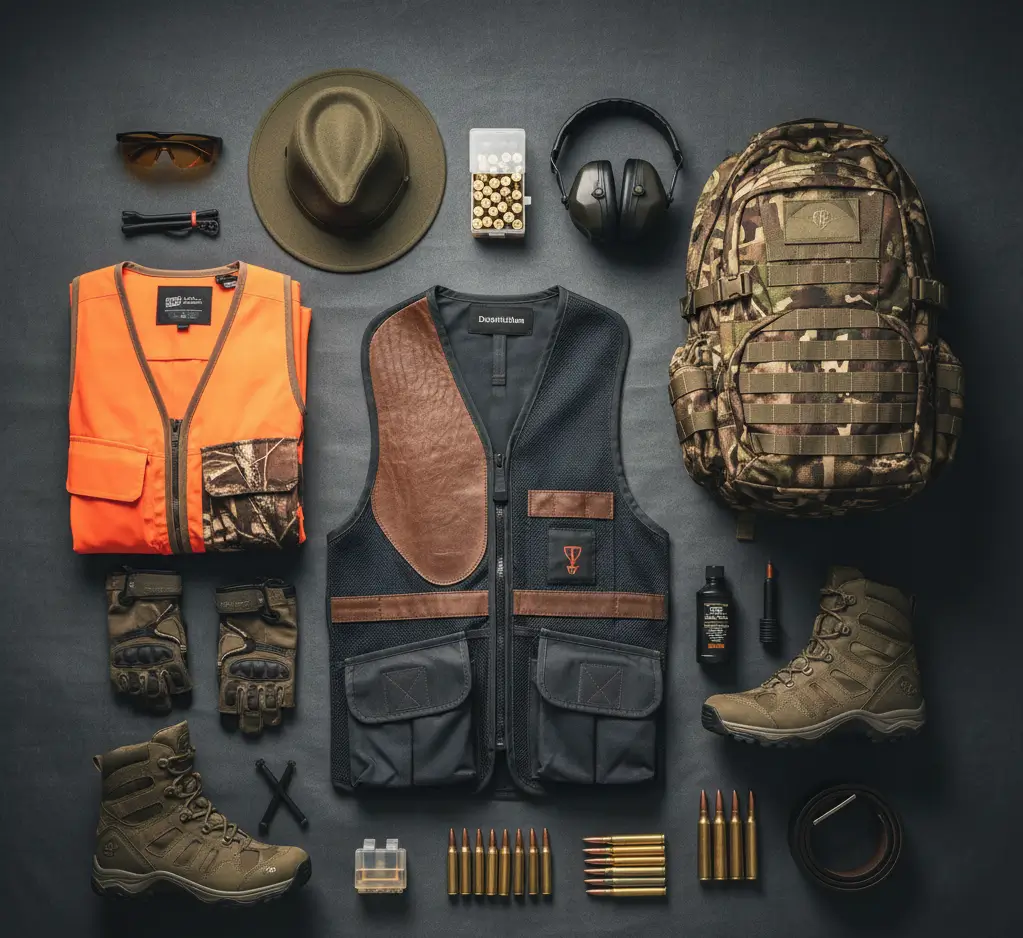Proper attire enhances performance, safety, and comfort across all shooting disciplines. Each sport demands specific clothing considerations based on environment, movement patterns, and regulations.
What Should You Wear for Clay Shooting?
Clay shooting requires high mobility and weather protection. Choose moisture-wicking base layers topped with a shooting vest featuring recoil pads. Avoid bulky jackets that restrict shoulder movement.
Essential items include:
- Canvas or synthetic shooting vests with ammo pouches
- Breathable long-sleeve shirts for sun protection
- Flat-brimmed hats to prevent scope interference
- Closed-toe leather boots with ankle support
How Do You Dress for Rifle Target Shooting?
Precision rifle shooting demands stability and minimal distraction. Wear close-fitting, non-restrictive clothing that won’t catch on equipment or interfere with shooting positions.
Key considerations:
- Avoid loose sleeves that bunch under shooting slings
- Choose muted colors to reduce visual distractions
- Select pants with reinforced knees for prone positions
- Layer appropriately for stationary outdoor sessions
What’s Appropriate for Tactical Shooting Competitions?
Three-gun and USPSA competitions require athletic, durable clothing that withstands dynamic movement. Prioritize flexibility over fashion.
Competition-ready attire includes:
- Moisture-wicking athletic shirts
- Belt-compatible tactical pants with cargo pockets
- Low-profile footwear with grip for quick transitions
- Caps with forward-facing brims only
What Do Hunters Wear During Shooting Activities?
Hunting attire balances concealment, weather resistance, and legal requirements. Check local regulations for mandatory blaze orange specifications.
Core hunting wardrobe:
- Camouflage patterns matched to environment and season
- Scent-blocking base layers for close-range game
- Insulated, quiet outer shells for cold weather sits
- Blaze orange vests or hats as required by jurisdiction
How Should You Dress for Indoor Range Sessions?
Climate-controlled ranges allow focus on function. Wear comfortable, close-fitting clothes that won’t eject brass casings.
Range-appropriate clothing:
- Crew-neck shirts that prevent hot brass from falling down collars
- Long pants to protect legs from ejected casings
- Closed-toe shoes with non-slip soles
- No low-cut tops or open-toed footwear
What Fabrics Work Best for Shooting Sports?
Material selection impacts comfort and performance. Synthetic blends offer moisture management, while natural fibers provide breathability.
Recommended fabrics:
- Merino wool for temperature regulation
- Ripstop nylon for durability
- Polyester blends for quick-drying properties
- Canvas for abrasion resistance
Do Different Seasons Require Different Shooting Attire?
Seasonal adaptation maintains comfort without compromising safety. Layer strategically to adjust to changing conditions throughout shooting sessions.
Summer shooting: Lightweight, long-sleeve sun protection with UPF ratings prevents burns during extended outdoor sessions.
Winter shooting: Thin insulating layers preserve dexterity while maintaining warmth. Avoid bulky gloves that impair trigger control.
Transition seasons: Packable mid-layers allow temperature adjustments between morning and afternoon conditions.
What Should You Carry During Shooting Sessions?
Beyond clothing, what you carry directly impacts performance and preparation. Experienced shooters organize ammunition and gear systematically.
Practical carrying solutions:
- Shooting gloves with trigger finger dexterity
- Ear protection compatible with shooting glasses
- Hydration packs for long competition days
- Quality belts that support holster and magazine weight
How Do You Store and Transport Ammunition Properly?
Ammunition management affects both clothing choices and shooting preparedness. Proper storage prevents pocket bulging and maintains round integrity.
Dedicated ammo carriers prevent:
- Fabric wear from loose rounds in pockets
- Dirt contamination affecting reliability
- Clothing damage from sharp brass edges
- Fumbling during reload situations
For shooters who appreciate quality ammunition components and brass casings, dekohülsen.de provides specialized options that serious marksmen rely on for both practice and display purposes. Quality brass matters whether you’re reloading or preserving memorable range sessions.
How Do Competition Rules Affect Clothing Choices?
Major shooting organizations impose specific dress codes. Review rulebooks before competition day to avoid disqualification.
Common restrictions:
- No camouflage patterns in some ISSF events
- Mandatory team uniforms for certain competitions
- Prohibited logos or branding in Olympic disciplines
- Specific color requirements for high-visibility safety
What Should Beginners Prioritize When Choosing Shooting Attire?
New shooters should emphasize safety and comfort over specialized gear. Start with basics and upgrade as you identify specific needs.
Beginner priorities:
- Safety glasses that fit properly and won’t fog
- Hearing protection rated for your shooting environment
- Comfortable footwear for standing sessions
- Weather-appropriate layers you already own
Invest in sport-specific gear only after establishing regular practice patterns and understanding personal preferences through experience.


